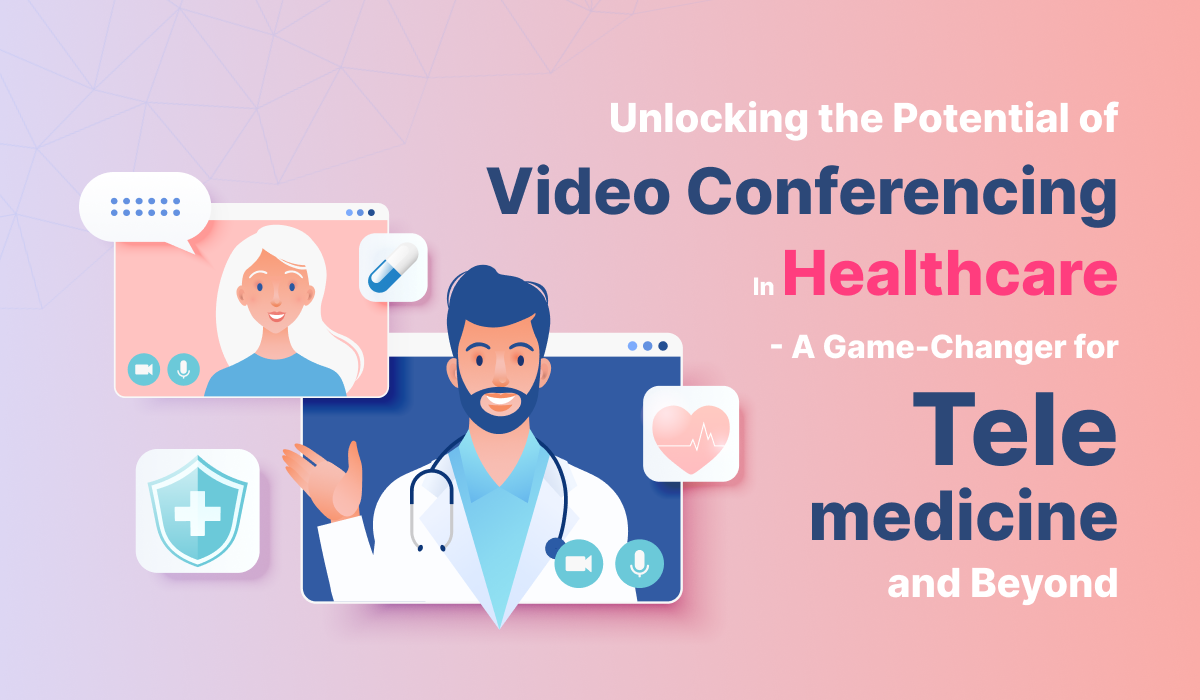Unlocking the Potential of Video Conferencing in Healthcare: A Game-Changer for Telemedicine and Beyond

In recent years, the healthcare industry has witnessed a remarkable transformation with the adoption of video conferencing solutions. This trend, accelerated by various factors, has far-reaching implications for healthcare access, collaboration, patient education, mental health services, security, and more. In this article, we delve into the profound impact of video conferencing on the healthcare landscape, exploring its multifaceted benefits and its role in shaping the future of healthcare.
Video Conferencing in Healthcare:
Revolutionizing Telemedicine and Remote Consultations
Video conferencing has emerged as a cornerstone of telemedicine, enabling healthcare providers to offer remote consultations, a lifeline during times of crisis like the COVID-19 pandemic. Patients can now access healthcare services from the safety and convenience of their homes, reducing the need for physical visits to healthcare facilities. This not only enhances patient convenience but also ensures the continuity of care.
Improved Healthcare Access, Anywhere and Everywhere
Video conferencing solutions are bridging geographical gaps, extending healthcare access to remote or underserved areas. Patients who previously had limited access to medical specialists can now connect with healthcare professionals from anywhere, breaking down barriers to quality care. It's a true game-changer in ensuring healthcare is available to all.
Enhanced Collaboration and Training in Healthcare
Within the healthcare industry, video conferencing is fostering collaboration among healthcare teams, medical researchers, and specialists. It facilitates multidisciplinary consultations and remote training sessions, ensuring knowledge is shared effectively. This collaboration ultimately translates into improved patient care and medical advancements.
Empowering Patient Education through Video Conferencing
Video conferencing is not just for professionals; it's also a powerful tool for patient education. Healthcare providers can share information, treatment plans, and post-treatment instructions effectively through video conferences. This leads to better patient outcomes and understanding, empowering patients to take charge of their health.
Mental Health Services Made Accessible
The use of video conferencing in mental health services has seen exponential growth. It provides mental health professionals with a means to provide therapy and support remotely, making mental healthcare more accessible to those who need it. This is particularly crucial in an era where mental health support is in high demand.
Prioritizing Security and Compliance in Healthcare
Healthcare organizations are increasingly focused on ensuring the security and compliance of their video conferencing solutions. This is paramount in protecting patient data and maintaining confidentiality. Secure and compliant video conferencing tools are now a top priority for healthcare organizations.
Seamless Integration with Electronic Health Records (EHR)
Many healthcare providers are integrating video conferencing solutions with their Electronic Health Records (EHR) systems. This not only streamlines patient records but also enhances the overall quality of care by providing a comprehensive view of a patient's medical history and treatment plans.
Scalability for Healthcare Systems of All Sizes
Video conferencing solutions are highly scalable, accommodating the needs of both small clinics and large healthcare systems. This adaptability ensures that healthcare organizations of all sizes can harness the power of video conferencing to improve patient care and operational efficiency.
Embracing Technological Advancements for Better Healthcare
Ongoing advancements in video conferencing technology, including improved video quality, real-time language translation, and augmented reality, are revolutionizing the healthcare experience. These innovations enhance the way healthcare is delivered and received, promising a brighter future for the industry.
In conclusion, the integration of video conferencing into the healthcare industry is a transformative development that enhances patient care, increases healthcare access, fosters collaboration among professionals, and ensures the security of sensitive medical data. As healthcare organizations continue to invest in secure, compliant, and user-friendly video conferencing solutions, the future of healthcare delivery looks more promising than ever before. The evolution of video conferencing in healthcare is not just a trend; it's a revolution that will define the way we experience healthcare in the years to come.
